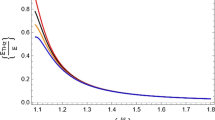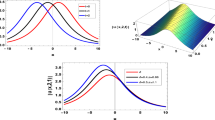Abstract
A study of the bispin is presented. The bispin is a semiconductor device that can convert incident light into a relaxation self-sustaining oscillation of electric current in the form of sharply peaked impulses, thus making both a photodetector and an electrical-pulse generator. Factors determining the peak current in different regimes of oscillation are investigated.
Similar content being viewed by others
REFERENCES
Bulgakov, S.S., Knab, O.D., Lysenko, A.P., and Moma, Yu.A., The Bispin: A Novel Microelectronic Device, Obz. Elektron. Tekh., Ser. 2: Poluprovodn. Prib., 1990, issue 6 (1563).
Lysenko, A.P., Two Oscillation Regimes in a Bispin Converter, Mikroelektronika, 1999, vol. 28, no. 2, pp. 148–154.
Lysenko, A.P., State Diagram of the Bispin, a Novel Optoelectronic ADC, Izv. Vyssh. Uchebn. Zaved., Elektron., 1999, no. 4, pp. 16–20.
Lysenko, A.P., Instability Conditions of the Stationary Nonconducting State for the Bispin, Mikroelektronika, 2002, vol. 31, no. 5, pp. 395–400.
Author information
Authors and Affiliations
Rights and permissions
About this article
Cite this article
Lysenko, A.P. Impulse-Current Generation by the Bispin: Factors Determining the Peak Current. Russian Microelectronics 32, 82–87 (2003). https://doi.org/10.1023/A:1022695817069
Issue Date:
DOI: https://doi.org/10.1023/A:1022695817069




